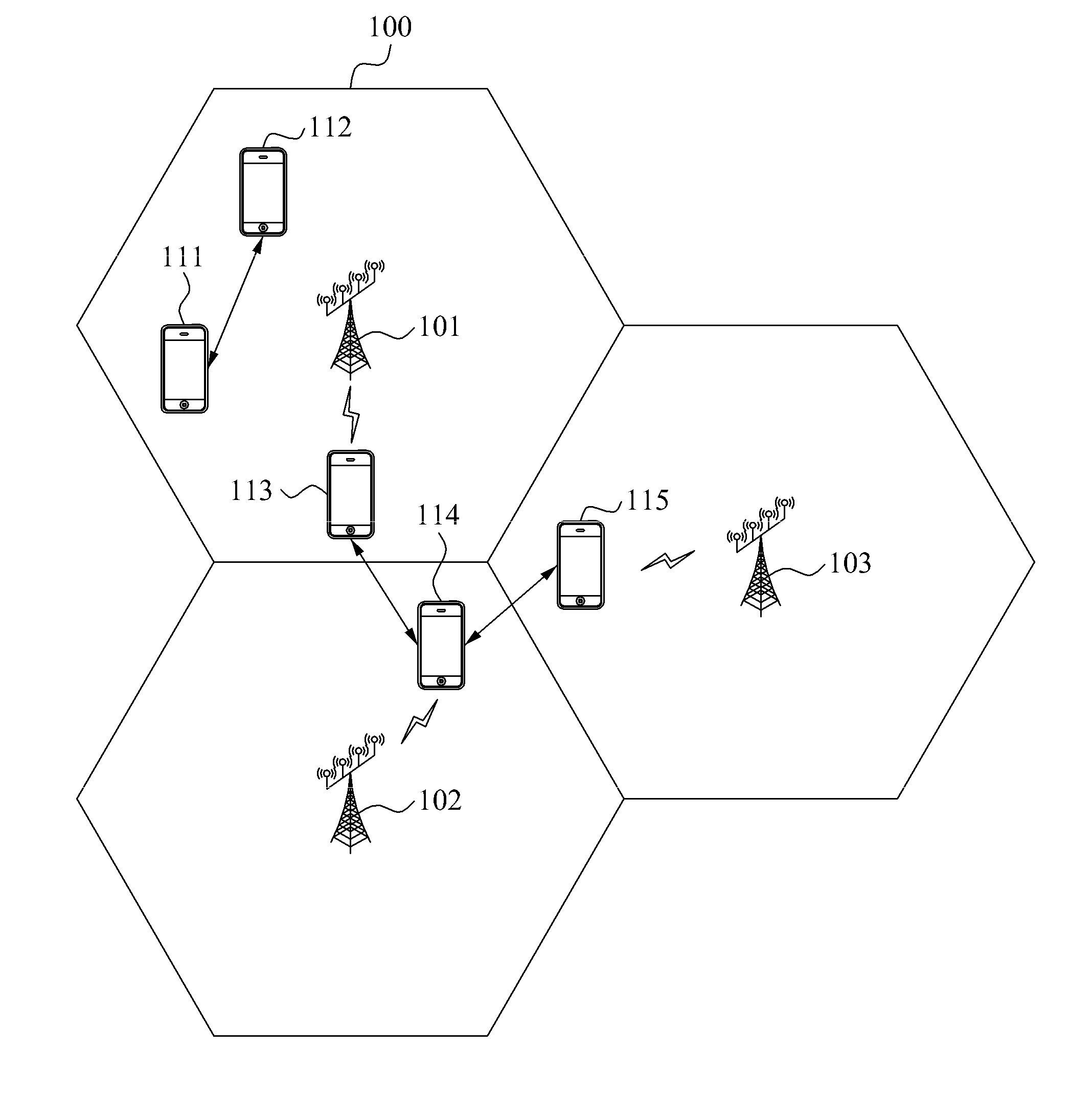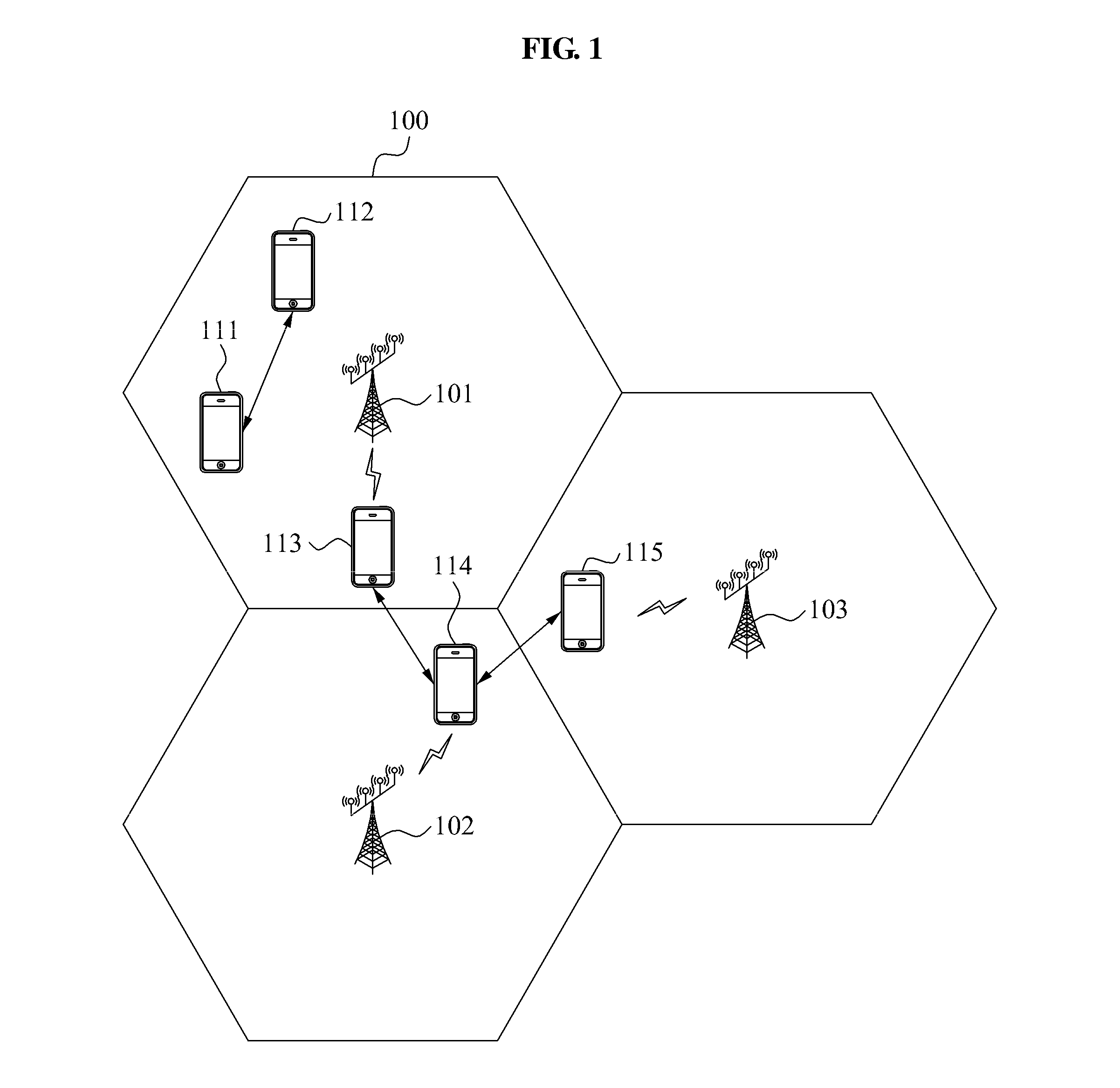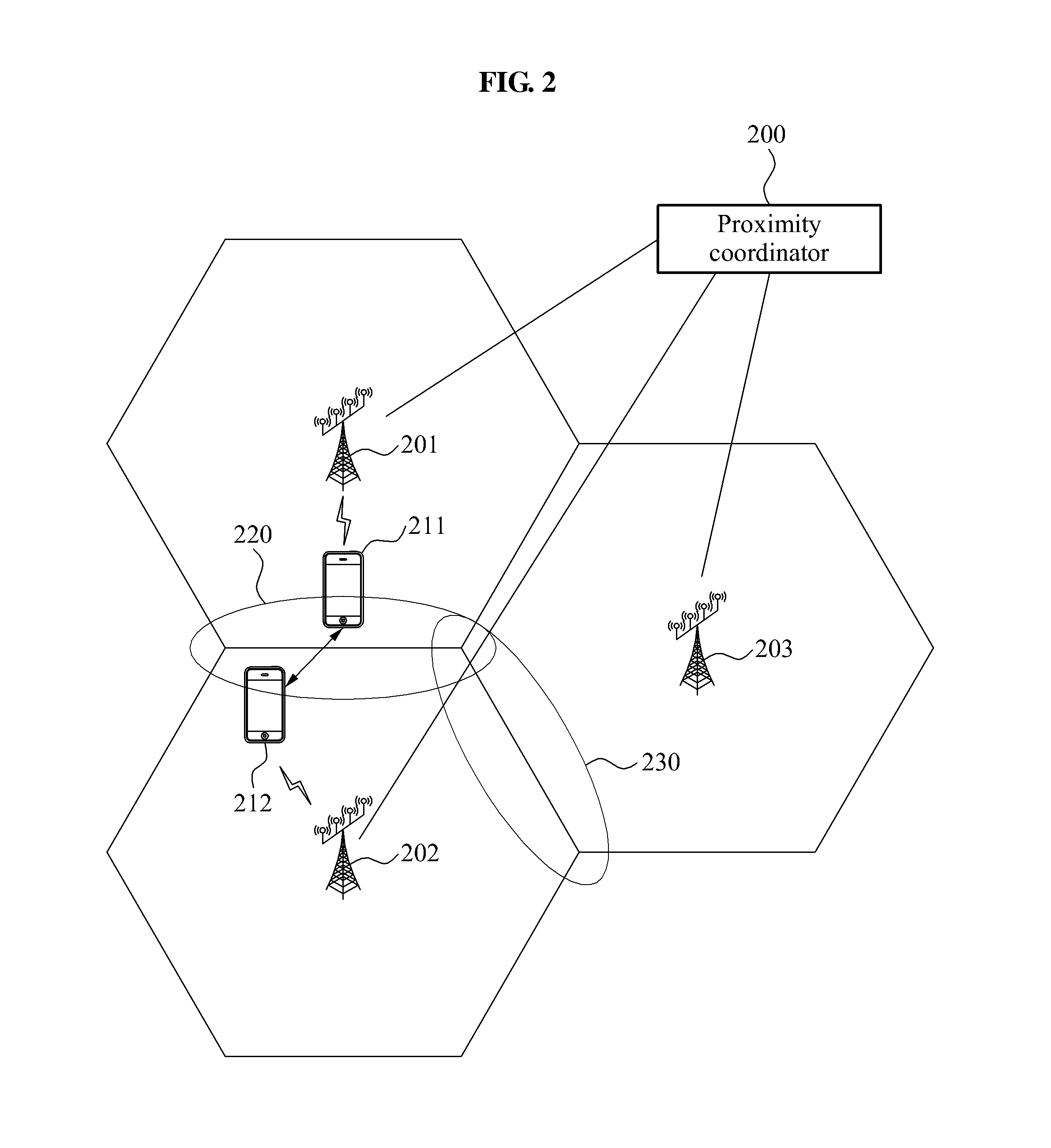Method and apparatus for scheduling in cellular based device to device communication
a cellular-based device and communication technology, applied in the direction of electrical equipment, wireless communication, etc., can solve the problems of rapid degradation and inability to efficiently allocate cellular resources
- Summary
- Abstract
- Description
- Claims
- Application Information
AI Technical Summary
Benefits of technology
Problems solved by technology
Method used
Image
Examples
Embodiment Construction
[0038]Reference will now be made in detail to exemplary embodiments of the present invention, examples of which are illustrated in the accompanying drawings, wherein like reference numerals refer to the like elements throughout. Exemplary embodiments are described below to explain the present invention by referring to the figures.
[0039]FIG. 1 is a diagram illustrating a device-to-device (D2D) communication using a mobile communication network. Hereinafter, D2D communications between terminals 111, 112, 113, 114, and 115 accessing three base stations 101, 102, and 103 are described with reference to FIG. 1 through an example. In FIG. 1, a hexagonal shape (honeycomb) 100 may represent a cell of each base station.
[0040]A first terminal 111 and a second terminal 112 may execute a D2D communication while accessing a first base station 101. A fourth terminal 114 accessing a second base station 102 may execute a D2D communication with a third terminal 113 accessing the first base station 1...
PUM
 Login to View More
Login to View More Abstract
Description
Claims
Application Information
 Login to View More
Login to View More - R&D
- Intellectual Property
- Life Sciences
- Materials
- Tech Scout
- Unparalleled Data Quality
- Higher Quality Content
- 60% Fewer Hallucinations
Browse by: Latest US Patents, China's latest patents, Technical Efficacy Thesaurus, Application Domain, Technology Topic, Popular Technical Reports.
© 2025 PatSnap. All rights reserved.Legal|Privacy policy|Modern Slavery Act Transparency Statement|Sitemap|About US| Contact US: help@patsnap.com



